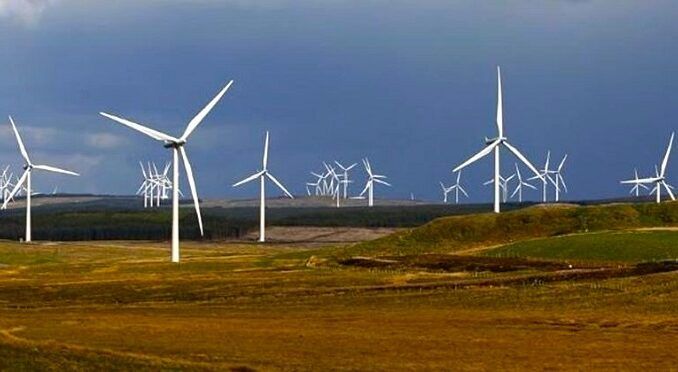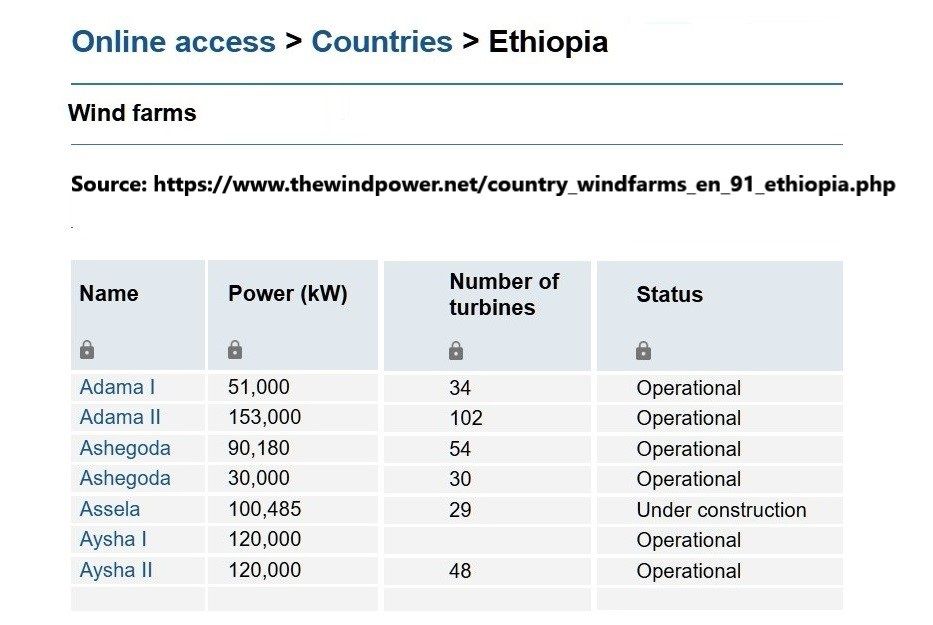
The Aysha wind power project, part of the China-proposed Belt and Road Initiative (BRI), broke ground in May 2018, with the project costing $257 million USD. China’s Dongfang Electric International Corporation, a state-owned enterprise specializing in the production of power-generating equipment, was contracted by Ethiopia to build the wind farm. The project is 85 % is funded by Exim Bank of China with the Ethiopian government funding 15%. Ethiopia signed-up to the BRI in September 2018, and joined the BRICS group of countries at the start of 2024.
Aysha stages I and II
The Aysha Wind Farm is being developed in stages, with the project’s first 16 turbines commencing producing power and connected to the national electricity grid in September 2022. The state agency in charge of building power projects and generating energy, the Ethiopian Electric Power Corporation (EEP) announced that by November 2023 the construction of Aysha II Wind farm project had reached 82% completion with 32 wind turbines installed of a planned total of 48 turbines. By the middle of 2024, both Stages I and II of the Aysha Wind Farm project were reported to be operational. The EEP plans to expand electricity output by 68% to nearly 9,000 megawatts in the three years from 2024.

The project has a total installed capacity of 120 MW and an energy output of 467 gigawatt hours per year, which boosts the national energy output of Ethiopia, meeting the rising demand for local power grid construction and upgrading.
Ethiopia’s installed energy generation capacity stands at 5,249 MW, with more than 90 percent of its energy source coming from hydropower. Wind power is the second-largest source of electricity, contributing 404 MW to the national grid.
The renewable energy projects are part of Ethiopia’s Growth and Transformation Plan II, and are aimed at boosting the country’s electricity generation capacity, contributing to the alleviation of electricity shortages experienced in the surrounding areas and Djibouti.
Located near the juncture of Ethiopia, Djibouti and Somalia, the wind farm will also provide electricity for industrial parks along the Ethiopia-Djibouti Economic Corridor and for the Addis Ababa-Djibouti Railway.
The Ethiopian government plans to construct more Wind power projects including Ayesha III, Adigala, Tulu Guled, Kebri Beyah, and the others.
Aysha stage III
The Ethiopian Monitor reported in December 2023 that Ethiopia’s Finance Ministry had signed an agreement with United Arab Emirates’ developer AMEA Power to build Stage III of the Aysha Wind Farm project. The cost is expected to be $600 million USD and the project will be built on 18,000 acres in Ethiopia’s Somali Region.
It is claimed that the proposed development will be the Horn of Africa’s largest onshore wind farm, with a capacity to generate 300 MW of electricity. Ethiopia and the UAE became members of BRICS at the start of 2024.
Sources:
- The Ethiopian Herald, November 9, 2023. https://press.et/herald/?p=84579
- Ethiopian Monitor, December 3, 2023. https://ethiopianmonitor.com/2023/12/03/ethiopia-partners-amea-to-build-300mw-wind-power-project/
- China Daily, Jul 31, 2021. https://global.chinadaily.com.cn/a/202107/31/WS6104cdc7a310efa1bd665b55.html